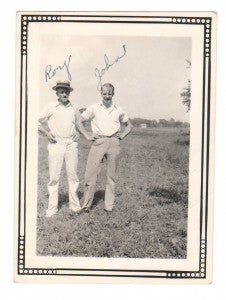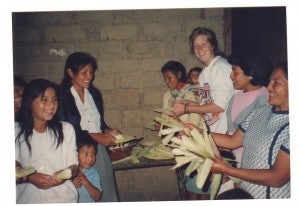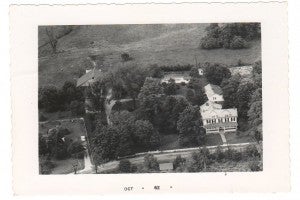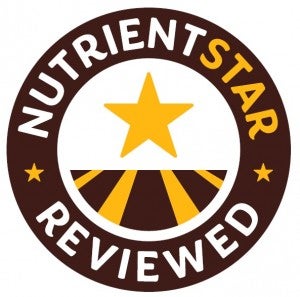From my grandfather’s farm to NutrientStar: Why I believe in growers

I once dreamed of pursuing a career in public radio and becoming the next Cokie Roberts. Not surprisingly, my life took me in a much different direction. The catalyst was a two-year Peace Corps stint in biodiversity-rich Ecuador that led me towards a career in conservation. But I never steered too far from my agricultural roots, and today my farming life has come full circle.
I grew up on a small farm in rural Ohio, surrounded by fields, woods, wetlands and a menagerie of animals. My grandfather lived next door and every day I’d tag along with him and help vaccinate the chicks, collect eggs, bale hay, and feed the cows.
Thanks to the responsibilities he gave me as a young child, I feel a special connection to the farmers I work with today as they face pressure to increase their yields without polluting the water supply or surrounding ecosystem.
Here’s my agricultural story, and why I believe that a new program called NutrientStar will positively impact both farmers’ businesses and the surrounding ecosystem.
Detours to Ecuador & Texas

During my time in the Peace Corps, I witnessed first-hand the double-edged sword of introducing natural resource extraction into a country with high poverty rates but also rich biodiversity. My heart especially goes out to Ecuador this week after the devastating earthquake.
I spent the next 15 years in Texas working on coastal and freshwater policy and the restoration of endangered species habitats near the U.S.-Mexico border – first with the Texas Center for Policy Studies and the Texas Natural Resources Conservation Commission, and later with EDF Texas.
But when an opportunity arose to transition to EDF’s sustainable agriculture team and focus on the Western Lake Erie Basin, the decision to move home to Ohio – and back to agriculture – was an easy one.
Farming in a new era

Times have changed a great deal since my grandfather took me on his morning farm rounds. It’s become extremely difficult to make a living from farming, especially with unpredictable crop prices. Growers must apply nutrients and grow crops in a leaky biological system and can’t meet their production goals without the nitrogen and phosphorus fertilizers they use, which are also harmful to the environment.
But the farmers I’ve come across are also keenly interested in being good stewards of the land; this makes my work with farmers in the Midwest incredibly rewarding.
That’s also part of the reason my colleagues and I developed NutrientStar, an independent, science-based program that reviews the performance of commercially available fertilizer management tools.
NutrientStar
 Most of us read the ingredients on a food label or research the estimated gas mileage of a car to make the best buying decisions. When farmers try to evaluate fertilizer management tools, they don’t have the same kind of objective information at their fingertips.
Most of us read the ingredients on a food label or research the estimated gas mileage of a car to make the best buying decisions. When farmers try to evaluate fertilizer management tools, they don’t have the same kind of objective information at their fingertips.
That’s why we created NutrientStar – to give farmers confidence that the money they spend on fertilizer management products and precision agriculture technologies will be well spent, and that those tools will work as advertised.
Assessments are conducted by an independent review panel of leading scientists, fertilizer experts, and technology practitioners. It’s the “who’s who” of fertilizer experts across the country.
Food companies are also interested in NutrientStar – as it gives them a tangible way to help farmers in their supply chain reduce fertilizer losses – and meet corporate sustainability goals.
Remembering my roots
When I’m out in the field meeting with farmers and talking about their stewardship goals, I often conjure up the memory of my grandfather whistling a happy tune as he walked to the barn with a swing in his gait. I’d like to think he’d be proud of the path I’ve forged and the modest contributions I’ve made to preserving natural systems and the rural life he adored.












